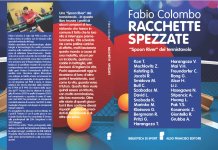hi guys,
i always hear about how bad it is to use fast equipment, u HAVE to start out with slow Allround blade paired with classic linear think sponged rubbers nor u'll always stay novice.
now i train in a club with players above average and a lot of them are playing controlled strokes, u can see the power is generated more from equipment rather than from their strokes (e.g. no fast acceleration, more upward that forward motion etc.)
i also switched from H3 to mid-hard tensor rubbers, from ALL-blade to OFF-blade and my game also developed into that controlled direction. i have to admit it feels real nice having this weapon constantly instead of generating power physically.
so why ppl's nr.1 hint is to avoid too fast equipment and recommending the slow equipment setup. i feel like having a faster setup might be even positive, not only mental but also increase the average speed and spin level. maybe it is even better to develop technique as u know if the ball is flying out u have to close the racket more, if its a net ball u have to move more upward etc. while with slow setup u can do w.e. u want and still a slowspin ball will come over.
before discussion, i dont talk about getting an alc as an average player, but more of getting an OFF- blade + mid° thick rubber as a developing, still below-average player.
i always hear about how bad it is to use fast equipment, u HAVE to start out with slow Allround blade paired with classic linear think sponged rubbers nor u'll always stay novice.
now i train in a club with players above average and a lot of them are playing controlled strokes, u can see the power is generated more from equipment rather than from their strokes (e.g. no fast acceleration, more upward that forward motion etc.)
i also switched from H3 to mid-hard tensor rubbers, from ALL-blade to OFF-blade and my game also developed into that controlled direction. i have to admit it feels real nice having this weapon constantly instead of generating power physically.
so why ppl's nr.1 hint is to avoid too fast equipment and recommending the slow equipment setup. i feel like having a faster setup might be even positive, not only mental but also increase the average speed and spin level. maybe it is even better to develop technique as u know if the ball is flying out u have to close the racket more, if its a net ball u have to move more upward etc. while with slow setup u can do w.e. u want and still a slowspin ball will come over.
before discussion, i dont talk about getting an alc as an average player, but more of getting an OFF- blade + mid° thick rubber as a developing, still below-average player.










